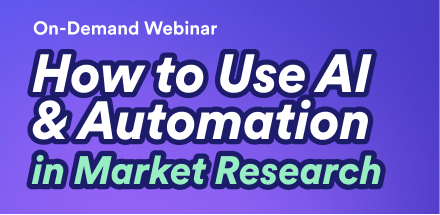In this post, we’ll explore the similarities and differences between text mining, text analysis, and text analytics, and explain how these techniques can help you understand your data like never before.
What is Text Analysis?
Text analysis is the process of studying unstructured text data to gather insights. While the term is mainly used today in a digital context, text analysis can—and traditionally has been—performed manually. For example, in the 1700s, the Swedish state church analyzed the ideological content of popular hymns to challenge church orthodoxy, while academics in the 1800s studied New York newspapers to find that coverage of literary, scientific, and religious stories had decreased.
Want to see an example? You can see how to perform a driver analysis with text data here.
What is Text Mining?
For all intents and purposes, text mining and text analysis are the same thing. Both describe the process of gaining insights from unstructured textual data. There is a slight difference in that while text analysis can be carried out manually, text mining usually refers to the automation of the process using machine learning and natural language processing (NLP). Regardless of the way you describe it, the process of extracting insights from data is invaluable for businesses. In fact, almost every major business performs text mining to add value to their company. This might be filtering out spam emails or analyzing customer feedback to improve service.
What is Text Analytics?
Text analytics can be defined as a more advanced version of text analysis. It is the process of applying AI to analyze large volumes of text automatically and present insights. It’s not just about detecting keywords and patterns but strives to actually understand your text. This makes for more insightful results, such as complex sentiment analysis, entity analysis, trend predictions and identification of long-term shifts in customer behavior. This is done by analyzing text based on its meaning, not just identifying keywords.
There are a number of different techniques that allow researchers to present their insights. These include;
- information extraction – the process of gathering entities, attributes and their relationships for future analysis
- information retrieval – using relevant keywords and associated patterns to track and monitor user behavior
- categorization – assigning different words and phrases to predefined categories
- clustering – dividing whole documents with similar contents into a group
- visualization – using visuals to indicate the density of a category (like word clouds)
- summarization – reducing the length of a document by summarizing the key details
Ready to analyze your text?
Start a free trial of Displayr.
Benefits and Applications of Text Analysis for Businesses
Regardless of what you want to call it, the process of extracting insights from your text data is going to help your business. Here’s a few use cases that might be right for you.
1. Improved Customer Insights
One of the most powerful applications of text analysis is in understanding customer sentiment and behavior. By analyzing customer reviews, support tickets, and social media posts, businesses can uncover valuable insights about their customers’ needs, preferences, and pain points. Text analytics tools, for example, can perform sentiment analysis to determine whether customer feedback is positive, negative, or neutral, helping businesses identify areas for improvement.
2. Enhanced Decision-Making
Text analysis helps organizations make data-driven decisions by turning raw text into actionable insights. Whether it’s understanding market trends, tracking competitor strategies, or gauging public opinion, the ability to analyze vast amounts of text data allows businesses to stay ahead of the curve. Trend analysis and predictive modeling can be applied to anticipate future market shifts or customer needs.
3. Automation of Routine Tasks
By automating the analysis of unstructured data, businesses can reduce manual labor and free up resources for more strategic tasks. Text mining tools powered by NLP can automate repetitive tasks such as data categorization, document classification, and spam detection, significantly improving operational efficiency.
4. Risk Management and Compliance
Text analysis is particularly useful in regulated industries like finance and healthcare, where companies must ensure they comply with strict regulations. By analyzing legal documents, financial reports, and communications, text analysis tools can help identify potential compliance issues or signs of fraudulent activity. This helps mitigate risks before they escalate into major problems.
5. Optimized Marketing Strategies
Marketers can use text analytics to gain deeper insights into customer preferences and behavior, allowing them to create more targeted campaigns. By analyzing keywords and phrases from customer interactions and social media, businesses can identify popular topics, customer pain points, and emerging trends. These insights can be used to refine marketing strategies and improve the relevance of promotional content.
Get Started with Text Analytics Today
As you might have noticed, although the definitions differ slightly, each of these techniques aims to answer the same question: how do you transform unstructured text data into actionable insights?
Displayr’s #1 text analytics software utilizes the latest large language models to provide an out-of-the-box solution that can understand the why behind your text data in seconds. Not only can you use Displayr to code text with a high level of accuracy, but you can also use prompts to ask highly detailed questions of your data—meaning sentiment analysis and intention detection are only a click away.
Want to see it yourself? Start a free trial.

